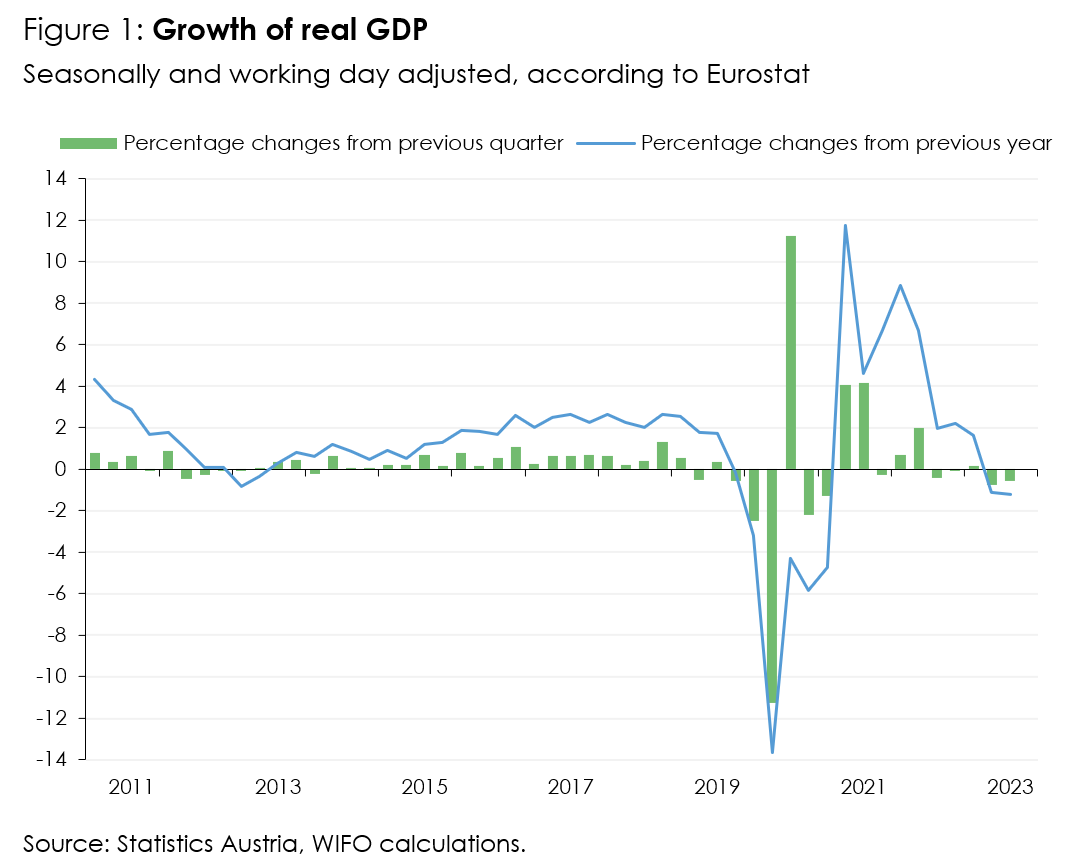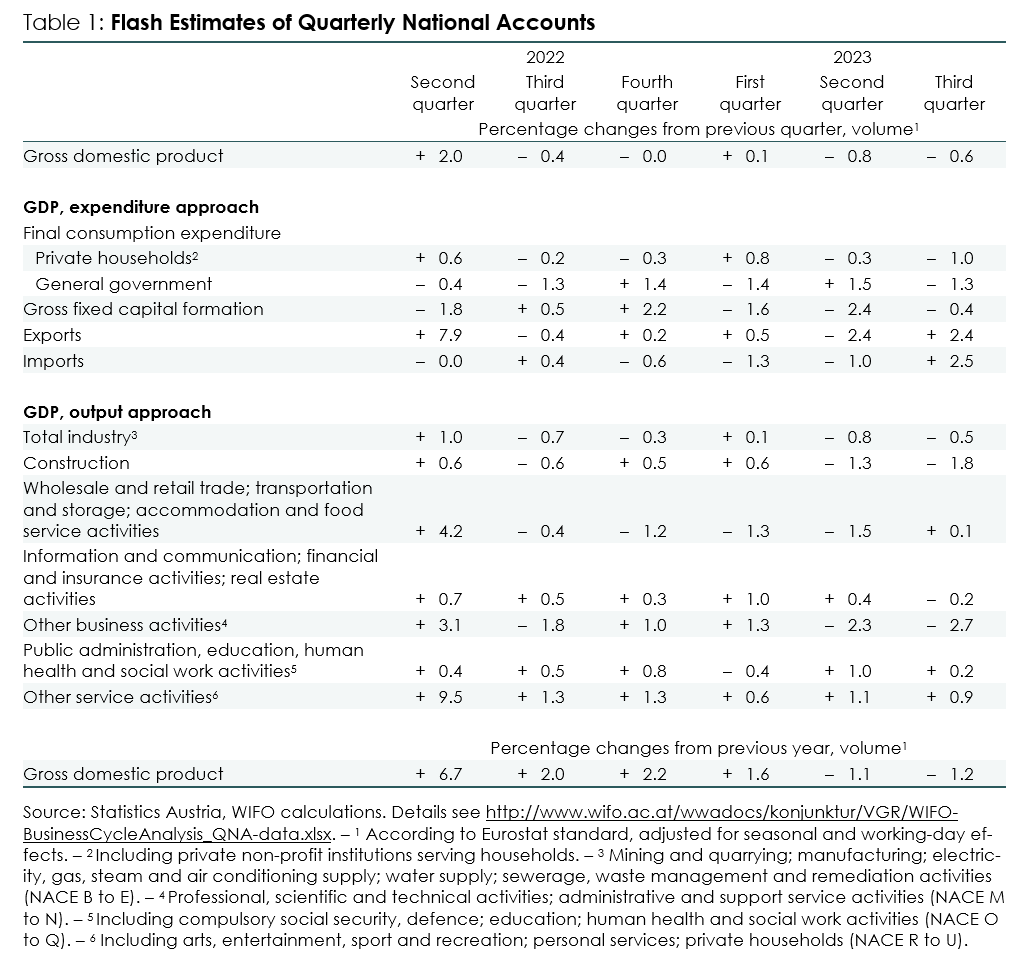
Austrian Economy Shrank Again in the Third Quarter of 2023
Austria's economic output declined again in the third quarter. According to preliminary estimates, GDP fell by 0.6 percent in real terms in the third quarter of 2023 (seasonally adjusted; key figure according to Eurostat standard). This was the fifth quarter in a row in which domestic economic output stagnated or declined (second quarter of 2023 –0.8 percent, first quarter of 2023 +0.1 percent, fourth quarter of 2022 –0.0 percent, third quarter of 2022 –0.4 percent). Year-on-year, compared to the third quarter of 2022, GDP fell by 1.2 percent.
The downward trend continued in both industry and construction. In the third quarter, value added in industry (NACE 2008, sections B to E) fell by 0.5 percent (second quarter –0.8 percent) compared to the previous quarter. In construction, a decline of 1.8 percent (second quarter –1.3 percent) was recorded.
Services production showed a mixed picture. While value added declined in information and communication, financial and insurance activities, real estate activities (NACE 2008, sections J to L), and other business activities (NACE 2008, sections M and N), public administration (NACE 2008, sections O to Q) and other service activities (NACE 2008, sections R to U) had a stabilising effect. In trade, transportation, accommodation and food service activities (NACE 2008, sections G to I), value added almost stagnated.
The Austrian economy is currently suffering from weak demand at home and abroad. Consumer demand from private households fell for the second quarter in a row (–1.0 percent; second quarter –0.3 percent). Investment demand also declined. Gross fixed capital formation was restricted compared to the previous quarter (–0.4 percent). Although total exports rose in the third quarter by 2.4 percent in real terms compared to the previous period, the increase was probably due to postponement effects. In the second quarter, exports fell by the same amount, resulting in stagnation on average over both quarters. Imports recently expanded by 2.5 percent, also after a decline in the second quarter (–1.0 percent).
Important information:
The WIFO flash estimate is a first estimate for the past quarter. It is based on the Quarterly National Accounts of Statistics Austria and includes GDP as well as components in the form of seasonally and working-day adjusted rates of change compared to the previous quarter (key figure according to Eurostat standard).
On 1 December 2023, Statistics Austria will publish quarterly GDP data and main aggregates for the third quarter of 2023 based on more complete data.




